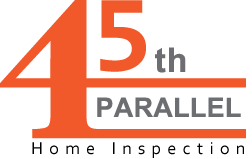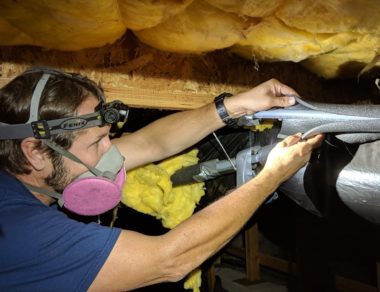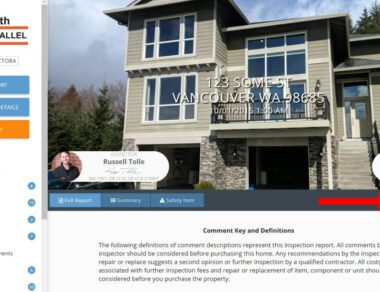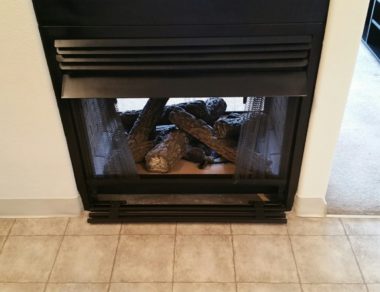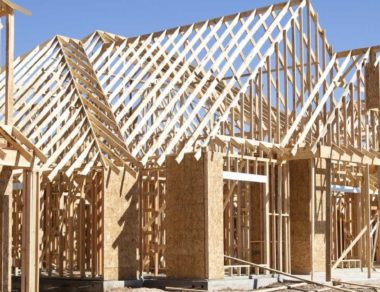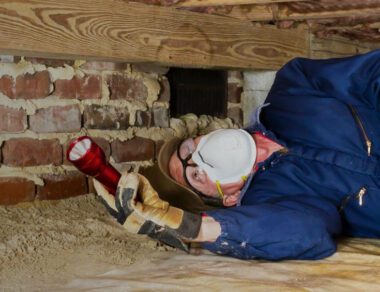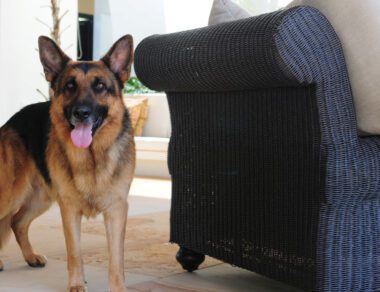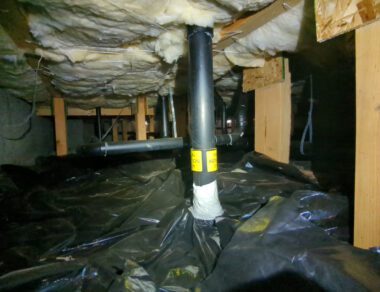
Why Protecting Your Home Or Commercial Building Starts with Knowing What’s Behind the Stucco
Your home or commercial building is likely one of the largest investments you’ll ever make, and keeping it in top shape is essential for both your peace of mind and your wallet. One of the things that can give buildings a distinctive look is Exterior Insulation and Finish Systems (EIFS), sometimes referred to as “synthetic stucco.” While EIFS can make a house or business look modern and stylish, like many things, its beauty is only skin deep—what’s going on underneath the surface could be a different story. That’s why EIFS inspections are so crucial for anyone with EIFS cladding on their home or commercial building.
Whether you’re buying a house with an EIFS exterior or already living in one, getting an EIFS inspection can potentialy prevent a world of headaches. If you own a commercial building like a hotel with EIFS cladding, an inspection can help uncover issues that should be addressed before they become bigger issues. From high moisture levels to decay and mold growth, there are potential issues hiding in the walls that could lead to costly repairs down the road.
If you’re wondering whether you need an EIFS inspection, this guide will help you understand what EIFS is, why it matters, and how a thorough inspection can save you time, money, and stress in the future.
What is EIFS?
Exterior Insulation and Finish Systems (EIFS), sometimes called ‘synthetic stucco’, is a thin layer of stucco over exterior insulation boards, that is popular for its ability to insulate homes while offering a sleek, stucco-like appearance. The system includes mechanically or adhesively fastened insulation boards, fiberglass mesh at joints and other specified locations, control and expansion joints, and a thin ⅛ inch stucco finish coat, all designed to improve your home’s energy efficiency.
EIFS cladding is lightweight, features design versatility, and is aesthetically pleasing, making it an attractive option for many homeowners. EIFS is used on both commercial buildings and residential dwellings. We perform EIFS inspections on both residential and commercial buildings.
In the Pacific Northwest, where we get about 50 inches of rain per year, EIFS is always of concern due to the high level of detailing it requires to keep water from entering into the wall cavity behind the EIFS. The biggest issue with EIFS is that it is often not meticulously installed and detailed correctly. Missing or incorrect flashings, improper or missing sealants, gaps for water to enter, and other installation errors often allow water entry, where it is trapped in the wall causing decay, mold growth, and pest intrusion. If installed properly, it is a great product, unfortunately, it is often not.
The Risks of Improperly Installed EIFS
When EIFS is installed correctly, it does wonders for a building. It provides an energy-efficient and attractive exterior. But if there are mistakes during the installation process, the system can become a moisture trap. Moisture levels that build up behind the synthetic stucco can lead to mold growth, rot, and other structural damage.
These issues are not immediately visible, but they can cause significant problems over time. For instance, improperly sealed penetrations or missing flashings can allow water to get trapped behind the EIFS system, creating the perfect conditions for decay.
If improper installations are left unchecked, they can result in costly repairs that can significantly affect the valuation of the home. Water damage inside your walls could also compromise the integrity of your home’s structure, turning what should be a protective layer into a hidden hazard. Often, where there is decay and moisture, pest intrusion follows.
That may sound ominous, however, periodic inspections can help you by guiding maintenance efforts, and by identifying current installation defects that can be repaired as well as uncovering hidden wall damage that can be repaired before it worsens.
What Happens During EIFS Inspections?
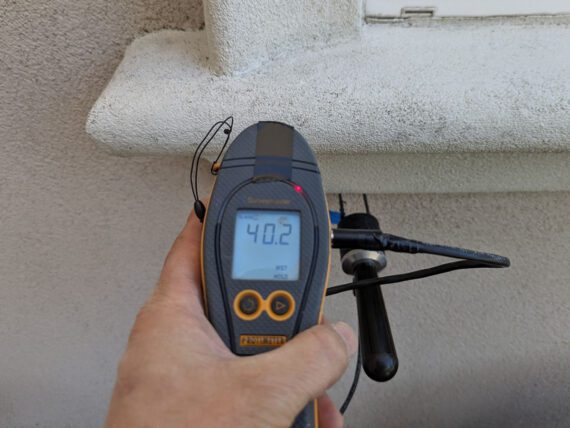 An EIFS/stucco inspection is a two-part process that identifies potential problem areas before they lead to serious damage. Whether you’re in the process of buying a new home, commercial building, or just want to ensure your current home or commercial building is in good condition, an inspection can save you from costly surprises.
An EIFS/stucco inspection is a two-part process that identifies potential problem areas before they lead to serious damage. Whether you’re in the process of buying a new home, commercial building, or just want to ensure your current home or commercial building is in good condition, an inspection can save you from costly surprises.
Before beginning any EIFS inspection, a signed waiver from the owner of the building is always required giving us permission to inspect and moisture probe the structure.
Part 1: The Visual Inspection
The first step in an EIFS inspection is the visual inspection. At 45th Parallel Home Inspection, our certified EIFS inspectors will review the exterior of the building up close and from a distance, checking the entire installation. We focus on specific areas where problems often occur, such as at windows, around roof diverters (kick out flashings), at all penetrations through the EIFS, and in areas where the system is too close to or buried in the ground.
During this phase, we’re on the lookout for any signs of improper installations, such as failed or damaged sealants, missing flashings, or cracks and gaps in the synthetic stucco. Often, during the visual or non-invasive portion of the inspection, we use a Tramex moisture meter, which is a non-invasive tool specifically designed for EIFS inspections, to help identify moisture that may have infiltrated the system.
Part 2: The Invasive Inspection
Following the visual inspection, we’ll move on to the invasive inspection. In all cases, when doing an EIFS inspection, we will do some invasive moisture probing. This is to set a baseline to compare various probe locations and to help establish how the system is performing. The amount of moisture probing we do will vary by the house, be somewhat guided by the visual portion of the inspection, and will be adaptive as we go.
For example, after probing a few areas below window corners and finding firm, dry substrate, we will likely lessen the amount of probing going forward unless there is a stronger indicator than simply being beneath the corner of a window. Likewise, when we begin finding issues with moisture and decay behind the EIFS, we will likely probe more locations to try and develop a more accurate picture of the extent of damage.
Moisture probing involves drilling two small ¼-inch holes at each test site in the EIFS system. We insert moisture probes into these holes, reaching the wall sheathing behind the insulation to check for the moisture content and the condition of the sheathing.
Our certified EIFS inspectors will take moisture readings at each test site, and we’ll check if the wall structure behind the foam feels firm or if it is decayed. By doing this, we can determine if your walls are in good condition or if repairs are needed. All findings from this phase and the visual inspection are documented in a detailed inspection report.
What’s Included in an EIFS Inspections Report?
After your inspection, you’ll receive a comprehensive inspection report detailing everything our inspectors found in both the visual and the invasive portion of the inspection. Here are some examples of what you can expect to see in an EIFS report for types of deficiencies:
- Failed, cracking, or gapping sealant: Sealant issues can allow moisture to seep into your walls.
- Inadequate clearance from the ground cover or hardscape: EIFS cladding should have proper clearance from the ground to prevent moisture from wicking up the wall and causing damage.
- Vegetation clearance issues: Shrubs and plants too close to your EIFS can cause moisture to build up.
- Improperly installed EIFS materials: If the EIFS wasn’t installed correctly, it could lead to moisture problems down the road.
- Missing or improper flashing: Flashing is essential to directing water away from your home, and missing flashings can cause serious water damage.
- Improperly sealed penetrations: Any holes or openings in your EIFS should be sealed to prevent moisture infiltration.
- Areas of moisture probing and readings: We record where moisture testing was done and the results.
- Areas of decay or damage discovered: If we find soft or decayed sheathing, it will be noted in the report along with the perceived extent of the decay.
Signs You May Need an EIFS Inspections
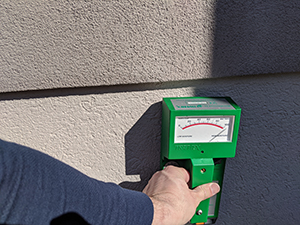 If you’re unsure whether your EIFS cladding is in good condition, here are a few things to look for:
If you’re unsure whether your EIFS cladding is in good condition, here are a few things to look for:
Cracks or Discoloration in the Stucco
- Cracks: These can indicate underlying structural issues, such as foundation settlement or shifting, or water damage. Cracks are often caused by swelling of the materials behind the EIFS such as the wall sheathing which then causes the EIFS to crack. The severity of the problem depends on the size, location, and pattern of the cracks.
- Discoloration: This can be a sign of water intrusion, which can lead to mold growth and rot. Dark spots or stains, depending on the situation, can often indicate water damage behind the EIFS.
Water Stains or Mold Near Windows or Doors
- Water stains: These can be caused by leaky windows or doors, faulty flashing, and water penetration behind the EIFS that leaves stains as it drains out and carries dirt and tannins from the wood structure. If left untreated, water entry can lead to more serious problems, such as rot and structural damage.
- Mold: Mold thrives in moist environments, so when water becomes trapped in walls behind EIFS, mold often follows. Mold infestation can affect the indoor air quality as well.
Gaps in the Sealant Around Windows or Doors
- Air leaks: Gaps in the sealant can allow air movement between the home’s interior and the exterior, leading to higher energy bills and occupant discomfort.
- Moisture intrusion: Gaps in the sealant, failed sealant, and improper or missing sealant joints can allow water to enter the wall structure and potentially cause serious damage. air to enter your home, leading to higher energy bills and discomfort.
Moisture or Stains Inside the Home, Especially on Walls or Ceilings
- Water stains around windows: Water stains around and below windows can signal water entry into the wall around the window and is a warning sign that water intrusion is happening.
- Water stains on floors or ceilings on the exterior wall: Water entry behind the EIFS can often lead to visible staining on the floor or ceiling next to the exterior wall
Noticeable Drafts or Inconsistent Temperatures Indoors
- Air leaks: Gaps in your doors, windows, or walls can allow air to pass through, affecting your home’s temperature and energy efficiency. If you notice air movement, drafts, or warm/cold areas around windows or exterior walls, air can freely move, and perhaps so water can enter as well.
These issues might seem minor at first glance, but they could be signs of deeper problems that require attention. If any of these sounds familiar, it’s a good idea to schedule an EIFS inspection.
5 FAQs About EIFS Inspections
What is EIFS?
EIFS stands for Exterior Insulation and Finish System. It’s a type of wall cladding that provides insulation and a finished look similar to stucco. It was used extensively in Europe up until being brought to the United States in the 1970s where it was mostly used on commercial buildings until the late 1980s when it became popular on residential homes. Today, it is used quite often on both residential and commercial buildings.
Why do I need an EIFS inspection?
EIFS can trap moisture behind the cladding if it’s improperly installed or damaged, leading to mold and structural damage. It is impossible to determine if issues exist behind the EIFS with a visual inspection. Only invasive moisture probing can determine the condition of the wall structure.
What’s the difference between EIFS and stucco?
EIFS is often called synthetic stucco because it looks similar, but it includes insulation boards beneath the outer layer and only has a very thin finish coat of stucco, which is quite fragile, unlike traditional hard coat stucco. Hard coat stucco is approximately ⅞ inch thick and consists of three coats of stucco comprising the system, and is much harder and more durable.
How often should I get an EIFS inspection?
It’s a good idea to get an EIFS inspection every few years or whenever you notice signs of damage like cracks or water stains. If you are buying or selling a home with EIFS installed, it is also advisable to have an EIFS inspection to determine the condition of the system to avoid issues with the sales transaction. The same holds true for commercial buildings as for residential homes.
How long does an EIFS inspection take?
A typical EIFS inspection takes anywhere from a few hours to multiple days, depending on the size of the building, the height, how many probe locations are necessary, and how much EIFS is installed on the building.
Protect Your Home or commercial building with an EIFS Inspection from 45th Parallel
Your home or commercial building is a significant investment, and the last thing you want is to discover preventable damage too late. Don’t wait for problems to appear—contact 45th Parallel Home Inspection today to schedule an EIFS inspection and ensure your property stays in good condition for years to come. Our certified EIFS inspectors are ready to help identify hidden issues before they turn into costly repairs.
